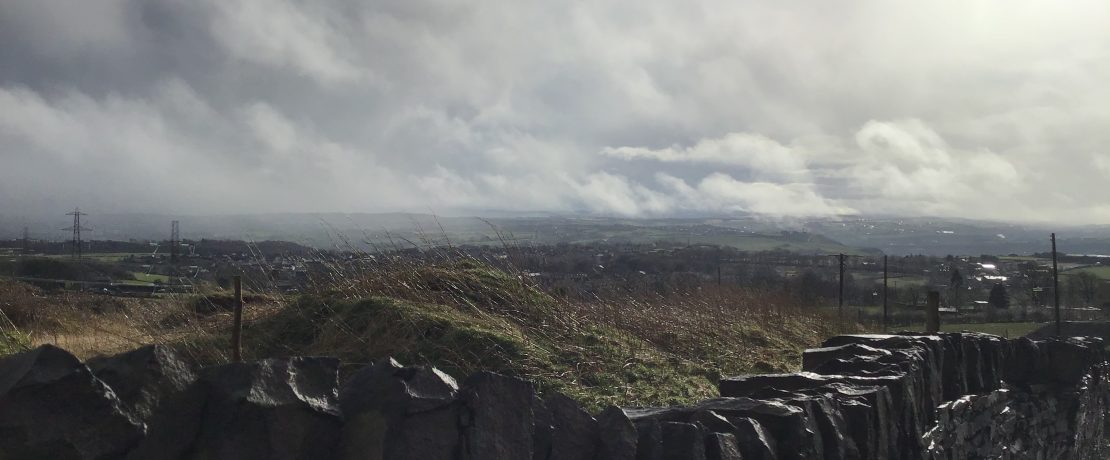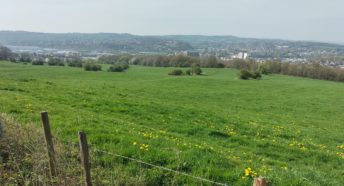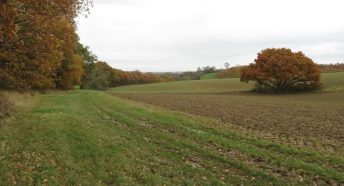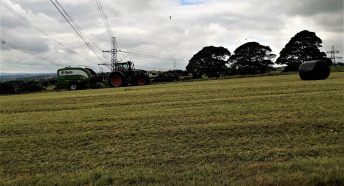A Garden In Name Only
An important and timely new report by Transport for New Homes may help us to tackle the risk of large, car-dependent housing estates being built in the countryside in Calderdale.
The Calderdale Local Plan is currently under Public Examination by a government-appointed Planning Inspector. One of the key features of the draft Plan is two large ‘Garden Suburbs’ on the edge of Brighouse, which CPRE has consistently opposed. This week, a new report has been published which reinforces our conviction that we are right to oppose them.
There is a popular misconception that CPRE objects in principle to new settlements. Patrick Abercrombie, the great planning pioneer most famous for the Greater London Plan, was a founding member of both CPRE and a proponent of Garden Cities. Yet in recent years both the Green Belt and the Garden City have been greatly weakened by a linguistic assault – a twisting of the language. Green Belt has been portrayed as a sort of gastric band, preventing cities from thriving, with no recognition of how they keep open space within reach of people’s homes. Meanwhile, countless generic, large-scale housing developments have been ‘greenwashed’ with the prefixes ‘Eco’ or ‘Garden’.
In West Yorkshire, the damaging impact of all this word-bending can be pointed out easily on the Local Plan maps. Huddersfield and Brighouse are like a romantic couple eating the same piece of spaghetti from either end, but finding when their mouths touch that they bite painfully onto the M62. And Brighouse has labelled its half of the meal ‘Garden Suburbs’.
There’s no reason in principle why new settlements are a bad idea, but they have to be a demonstrably better answer than other options to the question of where to locate new development. In the age of the Climate Emergency, and also the public health crisis that surrounds obesity, lack of exercise, and people’s disconnection from the natural world, one thing is obvious and urgent: new development MUST have the effect of reducing our dependence on cars. In CPRE’s view, if you can’t measure the reduction in car dependency a major development will enable, you shouldn’t be building the development. It’s that simple.
That’s why the Transport for New Homes report “Garden Villages and Garden Towns: Visions and Reality” is so important. The authors investigated 20 such schemes around the country, and found “an enormous gap between the garden community visions presented by government, consultants and local councils, and the developments likely to be built in reality”.
It’s a depressing but unsurprising read. It contrasts the images presented in the masterplans for new settlements, with “wide pavements, urban trees, shops and parks”, with the reality that “nearly every new garden community hinged on major road improvements to cater for a massive expected rise in car use”. Worse still, “90% of garden community plans appeared to be associated with road capacity increases, such as dualling roads, enlarging numerous road junctions, new bypasses, fast link roads…A number of garden community locations appear to be actually selected to finance a new bypass or other ‘strategic link’. This seems to put the cart before the horse!”
The report also calculates that about 75% of the Housing Infrastructure Fund spending on garden communities goes on roads, with almost nothing for new local rail stations, trams or light rail. This highlights an obvious problem: you can’t build a new settlement that doesn’t have roads, so the money goes towards that, and the rail or bus scheme becomes an optimistic bonus that might happen in the distant future.
The proposed Garden Suburbs at Brighouse have several problems. For one, they swallow up that remaining countryside between the town and the motorway, and some of that countryside is in fact very beautiful, and relatively tranquil. It’s a breathing space that will be lost. For another, a walk home from town would not be for the faint-hearted: steeply uphill and much of it along a busy dual carriageway. For another, it would be much quicker to drive onto the motorway and into Leeds by car than to go to Brighouse station and catch the train. In other words, all the ingredients of unsustainable developments are there, waiting to be baked into yet another car-dependent sprawl.
Please join CPRE and help us fight these misguided proposals for Calderdale.








